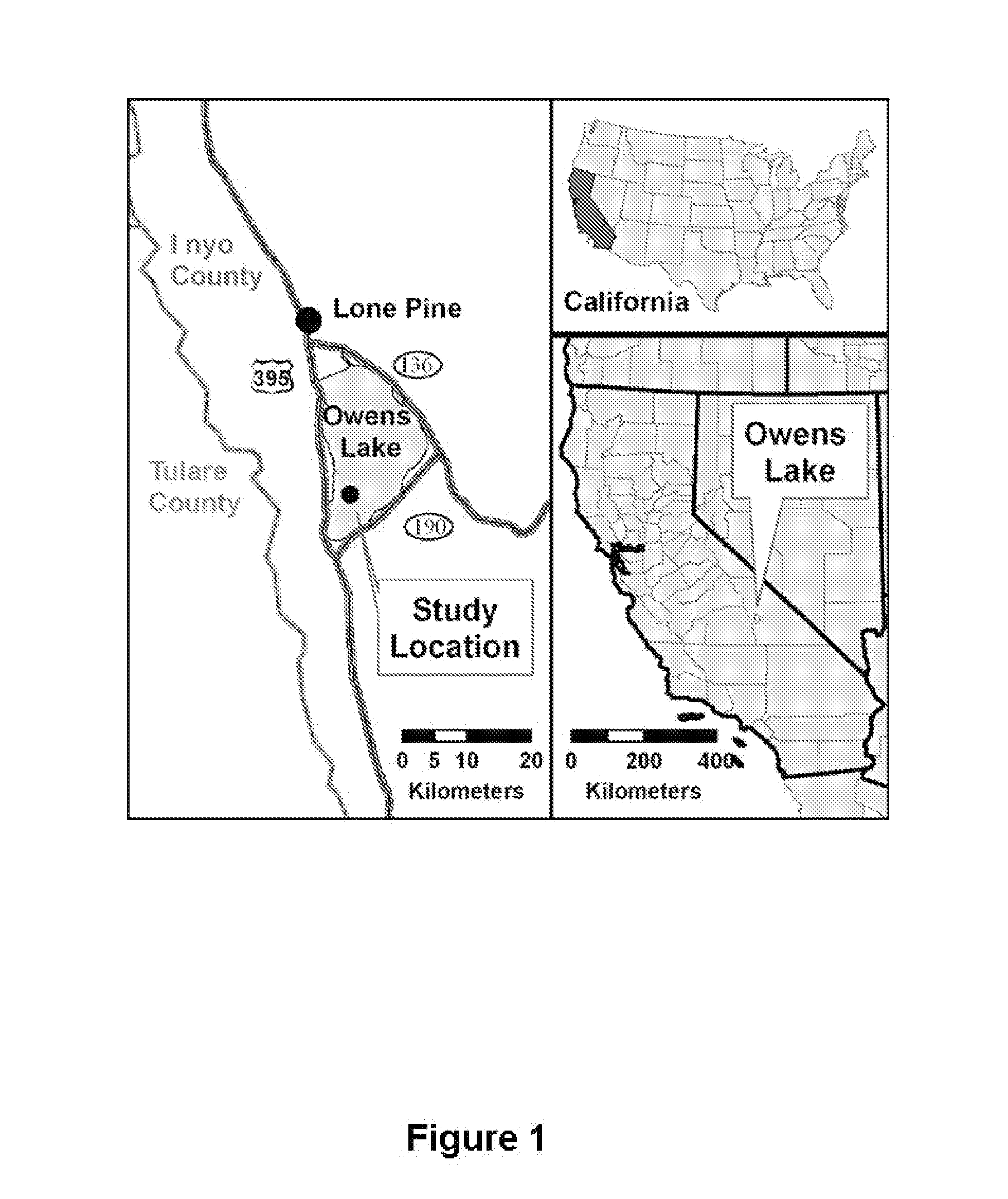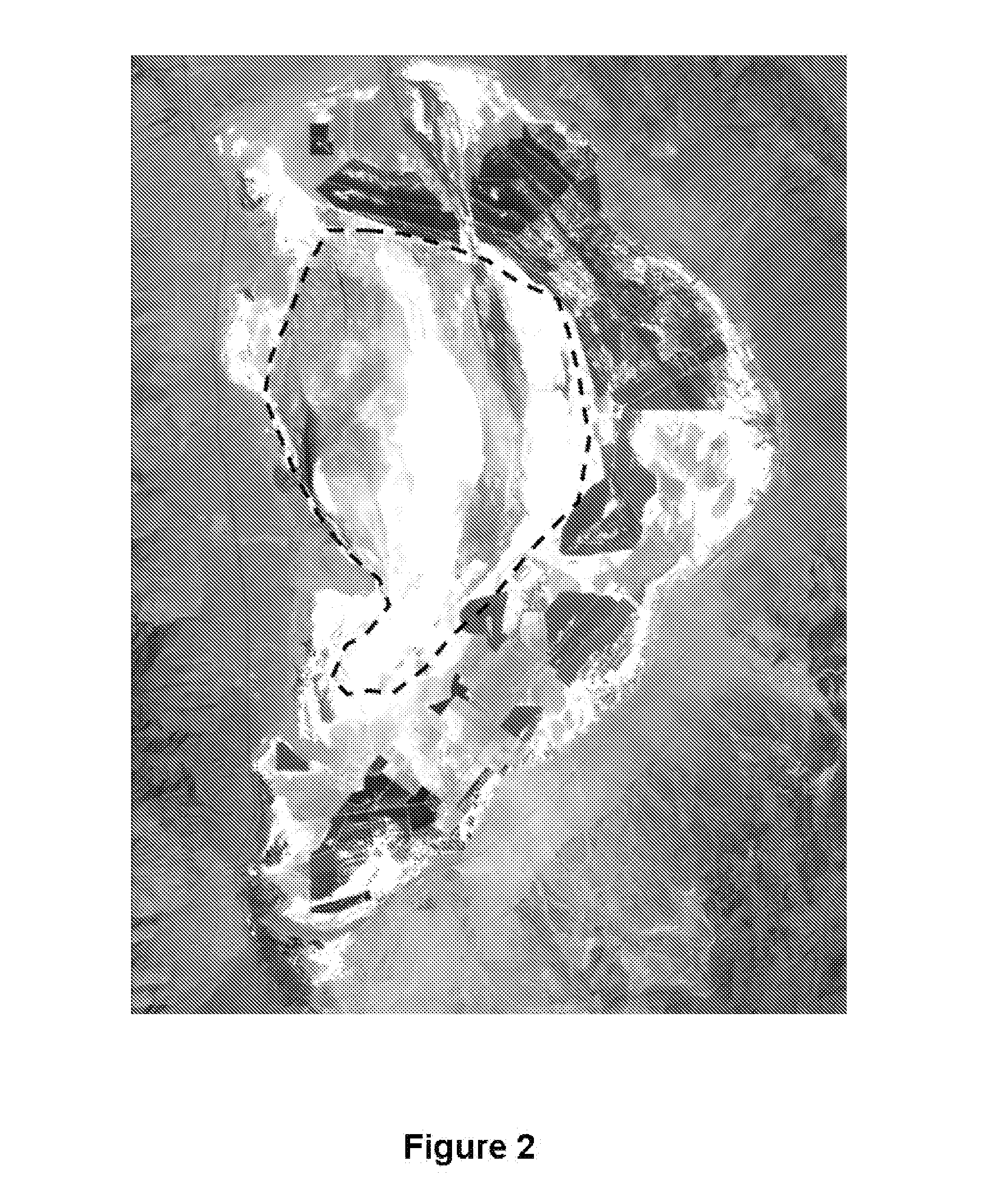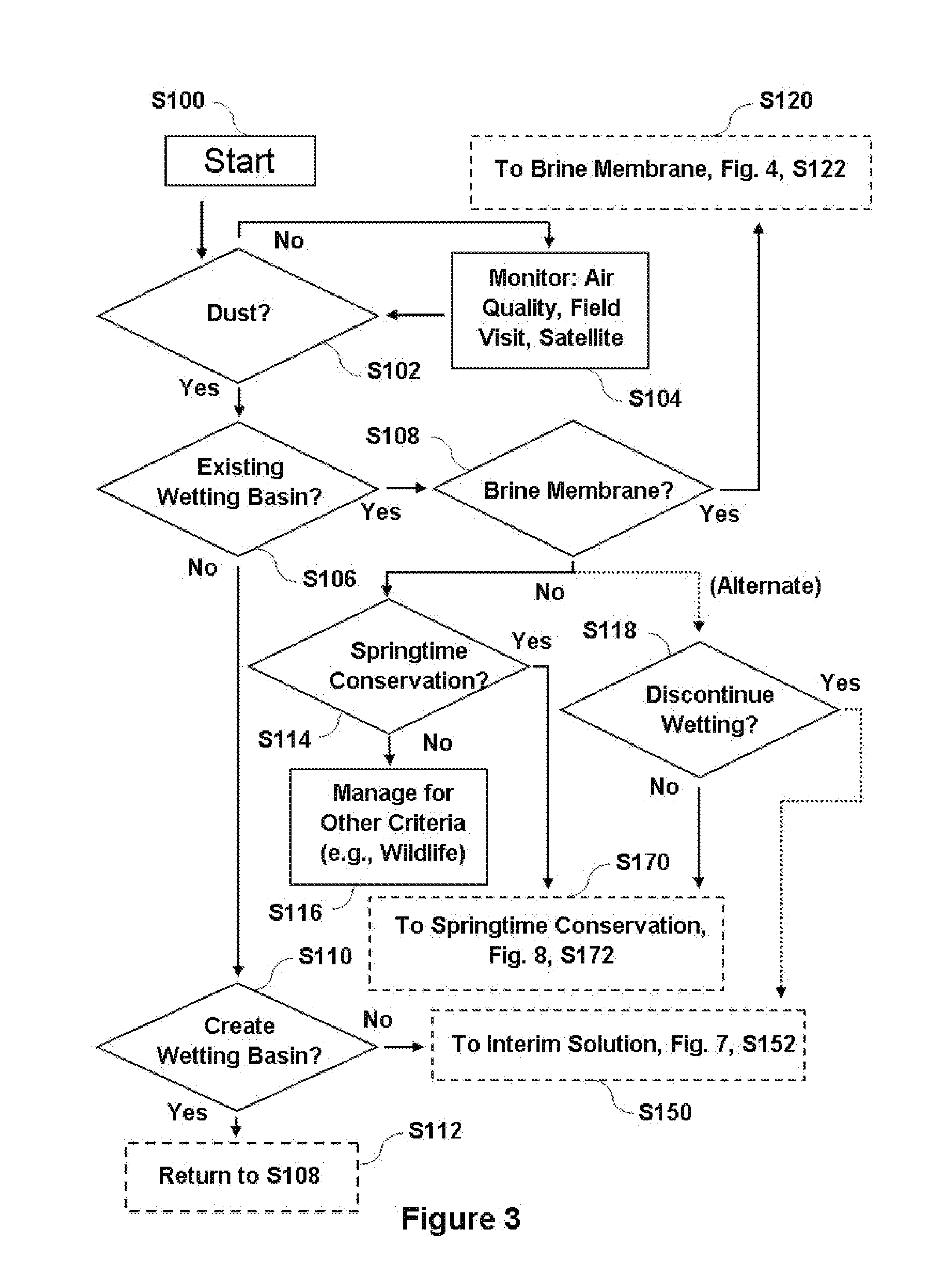Methods for dust control on saline dry lakebeds using minimal water resources
a technology of dry lakebeds and water resources, applied in the field of environmental management, can solve the problems of desiccation of lakes, destroying soil cohesion, health and safety hazards in surrounding regions, etc., and achieve the effect of conserving significant water resources and safely curtailing water supplies to wetting basins
- Summary
- Abstract
- Description
- Claims
- Application Information
AI Technical Summary
Benefits of technology
Problems solved by technology
Method used
Image
Examples
example embodiment
[0059]Other features and embodiments of the present invention are described herein with reference to the particular site of Owens Lake, Calif. The system and methods of the embodiments are adapted for use in dust control wetting basins on the Owens Lake bed. The area of these basins was 35.8 square miles measured on Apr. 22, 2011 by Landsat satellite data used for monitoring wetting basin compliance.
[0060]The main goal of the Owens Lake embodiment is to control dust while providing nearly complete water conservation. Other goals are to implement dust control for the lowest possible cost, as rapidly as possible, and using a minimum of resources. For example, a method that competes with the three conservation methods and that is under serious consideration, is the placement of four to eight inches of gravel atop engineering fabric—a method that may cost up to fifty million dollars per square mile, require burning millions of gallons of diesel fuel. Once gravel is in place it is perman...
PUM
| Property | Measurement | Unit |
|---|---|---|
| temperatures | aaaaa | aaaaa |
| temperatures | aaaaa | aaaaa |
| thickness | aaaaa | aaaaa |
Abstract
Description
Claims
Application Information
 Login to View More
Login to View More - R&D
- Intellectual Property
- Life Sciences
- Materials
- Tech Scout
- Unparalleled Data Quality
- Higher Quality Content
- 60% Fewer Hallucinations
Browse by: Latest US Patents, China's latest patents, Technical Efficacy Thesaurus, Application Domain, Technology Topic, Popular Technical Reports.
© 2025 PatSnap. All rights reserved.Legal|Privacy policy|Modern Slavery Act Transparency Statement|Sitemap|About US| Contact US: help@patsnap.com



